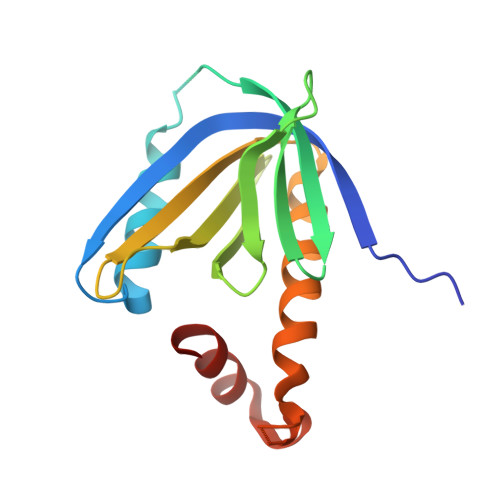Autoinhibition of Mint1 adaptor protein regulates amyloid precursor protein binding and processing.
Matos, M.F., Xu, Y., Dulubova, I., Otwinowski, Z., Richardson, J.M., Tomchick, D.R., Rizo, J., Ho, A.(2012) Proc Natl Acad Sci U S A 109: 3802-3807
- PubMed: 22355143
- DOI: https://doi.org/10.1073/pnas.1119075109
- Primary Citation of Related Structures:
4DBB - PubMed Abstract:
Mint adaptor proteins bind to the amyloid precursor protein (APP) and regulate APP processing associated with Alzheimer's disease; however, the molecular mechanisms underlying Mint regulation in APP binding and processing remain unclear. Biochemical, biophysical, and cellular experiments now show that the Mint1 phosphotyrosine binding (PTB) domain that binds to APP is intramolecularly inhibited by the adjacent C-terminal linker region. The crystal structure of a C-terminally extended Mint1 PTB fragment reveals that the linker region forms a short α-helix that folds back onto the PTB domain and sterically hinders APP binding. This intramolecular interaction is disrupted by mutation of Tyr633 within the Mint1 autoinhibitory helix leading to enhanced APP binding and β-amyloid production. Our findings suggest that an autoinhibitory mechanism in Mint1 is important for regulating APP processing and may provide novel therapies for Alzheimer's disease.
- Department of Biology, Boston University, 5 Cummington Street, Boston, MA 02215, USA.
Organizational Affiliation:




















